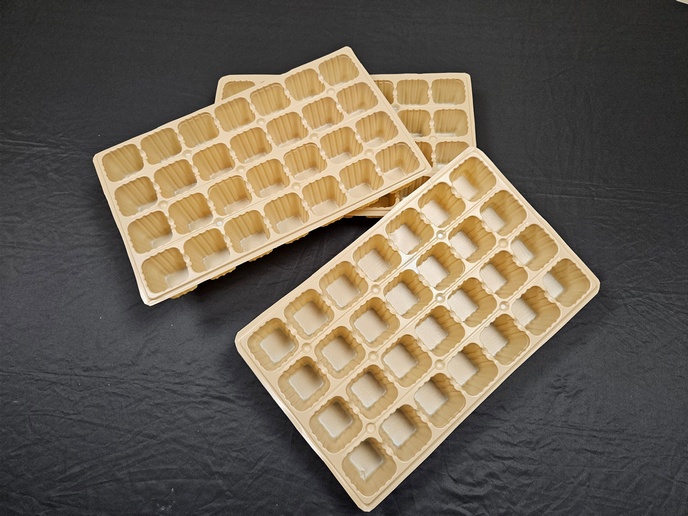Unlocking the potential of feathers in the agricultural sector
The European poultry sector produces about 3.6 million tonnes of feathers every year, but only a quarter of this by-product is collected separately for reuse in animal feed and fertilisers. This underutilised waste stream, rich in a valuable protein, offers opportunities to advance the EU’s bioeconomy. The UNLOCK(opens in new window) project, which received funding from the Bio-based Industries Joint Undertaking, a public-private partnership between the EU and industry, developed technologies and targeted agricultural products to make the most of discarded feathers.
Valorisation of keratin
Feathers are composed primarily of keratin(opens in new window), a key protein in the structure of hair, nails, scales and feathers. By incorporating keratin into bioplastics, resulting materials have the potential to outperform fossil fuel-based industry standards. “Agriculture needs innovative, biodegradable materials that can reduce costs and waste as well as improve soil quality. Conventional plastics production uses non-renewable resources, and their disposal at the end of life leads to environmental pollution, including microplastic contamination, affecting soil health and long-term sustainability,” explains project coordinator Sarah Montes. Introducing keratin into bioplastics improves their degradability. Timely decomposition reduces waste and eliminates the costs associated with disposal. An added advantage is that, as feathers decompose, they enrich the soil with nitrogen.
Bio-based agricultural applications
The UNLOCK consortium is a multidisciplinary team of 15 partners from across seven EU countries. With the aim of addressing the full value chain, the project coordinated expertise in feedstock analysis, end-product fabrication and sustainability assessments. The project’s four keratin-enriched agricultural products include seed trays, geotextiles, mulch films and hydroponic foams. Seed trays, which have a strong potential for market growth, are compostable under industrial conditions(opens in new window). Nonwoven geotextiles are used for crop protection and are partially biodegradable in soil and fully compostable. As they breakdown they provide as much as 15 g nitrogen per m2 of soil. UNLOCK’s mulch films provide a similar function to the geotextiles and are designed particularly for short-term crops. Hydroponic foams are used in the substrates for hydroponic crops and replace clay pebbles. The nitrogen they release supports plant growth, and the foam pebbles can be composted under industrial conditions or left to decompose in the soil.
Feather treatment technologies
One of the difficulties faced by the project was scaling up its innovative feather-processing technologies. Technologies were successfully tested at pilot scale, but because feathers are a very low-density material, the large volume of feathers needed to test at demonstration scale was a challenge. Still, advances in feather processing are among the project’s standout achievements. Montes shares: “In addition to the four targeted applications developed by the project, one of UNLOCK’s main milestones has been the construction and commissioning of the demo plant for feather sterilisation and shredding in Poland, with a production capacity of 200 kg/h.” Two additional demo plants are located in Sweden, with a focus on steam explosion and microbial fermentation respectively. The various treatment strategies UNLOCK developed are important to future market uptake of keratin-based bioplastics. “We now know that treated feathers biodegrade much faster than untreated feathers,” Montes adds, underscoring the importance of these treatments to product quality. The EU’s long-term strategy for climate neutrality depends on phasing out fossil fuel-based materials. Bioplastics made with feathers are a promising solution.







